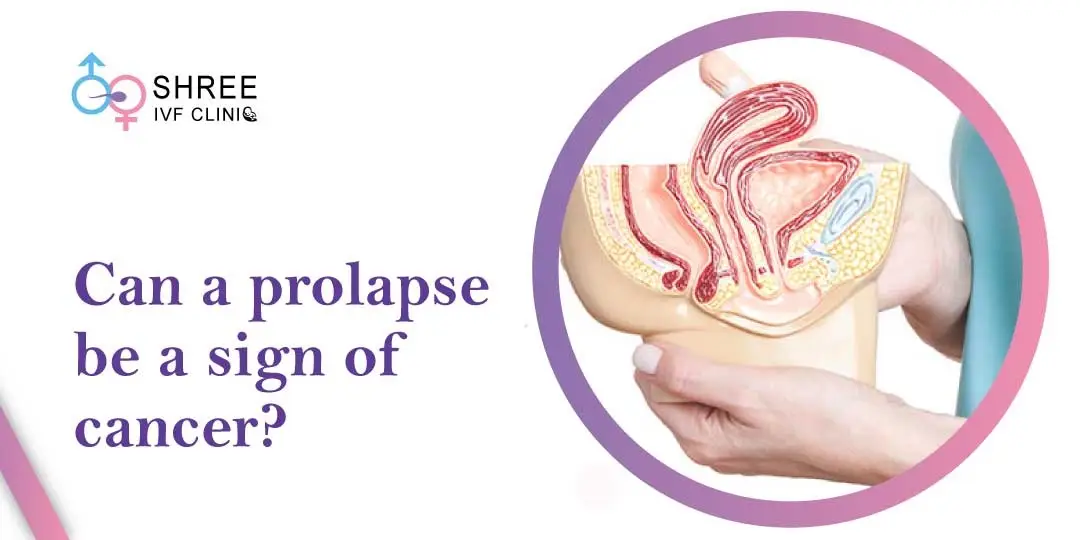Pelvic Prolapse: Causes, Symptoms, Treatment Options, and Prevention
UPDATED ON 12TH JAN. 2024
Welcome to our comprehensive guide on pelvic prolapse, a common condition that affects many individuals in India.
In this detailed article, we will delve into the intricacies of pelvic prolapse, including its causes, symptoms, diagnosis methods, available treatment options, and preventive measures.
Whether you have personally experienced pelvic prolapse or are seeking information for a loved one, this article aims to provide a thorough understanding of the condition and empower you to make informed decisions about your pelvic health.

AUTHOR
Dr Jay Mehta
Scientific Director & IVF Specialist with 10+ years of experience
CONDITION
GET IN TOUCH ON
What is Pelvic Prolapse?
Pelvic prolapse occurs when the organs within the pelvis, such as the uterus, bladder, rectum, or vaginal walls, descend or shift from their regular positions.
To grasp the concept of pelvic prolapse, it’s essential to understand the role of the pelvic floor and how it supports these organs.
The pelvic floor consists of muscles, ligaments, and connective tissues that support the pelvic organs. We will explore the anatomy and function of the pelvic floor, shedding light on the nature of pelvic prolapse.
Types of Pelvic Prolapse
Pelvic prolapse can manifest in various forms, each affecting different organs within the pelvic region. We will discuss the most common types of pelvic prolapse, namely:
1. Uterine prolapse: This occurs when the uterus descends into the vaginal canal.
2. Cystocele: This type involves the descent of the bladder into the vagina.
3. Rectocele: In this condition, the rectum protrudes into the back wall of the vagina.
4. Vaginal vault prolapse: This happens when the top of the vagina descends after a hysterectomy.
By familiarising ourselves with these types, we can better identify the associated symptoms and seek appropriate medical attention.
Causes and Risk Factors
Understanding pelvic prolapse’s underlying causes and risk factors is essential for prevention and management. Several factors contribute to weakened pelvic floor support, including:
- Childbirth: Vaginal delivery, especially multiple pregnancies, can strain the pelvic floor muscles and tissues.
- Hormonal changes: Decreased estrogen levels during menopause can affect the strength and elasticity of pelvic tissues.
- Aging: As we age, the pelvic floor muscles may weaken naturally.
- Chronic conditions: Chronic coughing, obesity, and conditions that increase abdominal pressure, such as constipation or heavy lifting, can contribute to pelvic prolapse.
By rerecognizinghese factors, individuals can take proactive measures to mitigate their risk of developing pelvic prolapse.
Symptoms
Recognizing the symptoms of pelvic prolapse is crucial for early detection and treatment. Common signs of pelvic organ descent may include:
- A bulging sensation in the pelvic area.
- Discomfort or a feeling of pressure in the vagina.
- Urinary incontinence or frequent urination.
- Difficulty emptying the bladder or a sense of incomplete bladder emptying.
- Pain or discomfort during sexual intercourse.
- Lower backache or pelvic pain.
By being aware of these symptoms, individuals can seek timely medical attention and improve their quality of life.
Diagnosis and Medical Evaluation
Accurate diagnosis is pivotal in developing an effective treatment plan for pelvic prolapse. Gynaecologists use various diagnostic methods, including:
1. Medical history evaluation: Discuss symptoms, medical history, and risk factors with a doctor.
2. Physical examinations: The doctor will perform a pelvic examination to assess the position of the pelvic organs.
3. Imaging tests: In some cases, imaging tests like ultrasound or MRI may be used to evaluate the extent of prolapse.
4. Pelvic floor assessments: These examinations measure muscle strength and assess pelvic floor function.
Patients can actively participate in their journey by understanding these diagnostic processes.
Non-Surgical Treatment Options
Non-surgical approaches play a significant role in managing pelvic prolapse and alleviating its symptoms. Various non-surgical treatment options include:
- Pelvic floor exercises: Also known as Kegel exercises, this helps strengthen the pelvic floor muscles.
- Lifestyle modifications: include maintaining a healthy weight, avoiding heavy lifting, and managing chronic conditions like constipation or coughing.
- Pessaries: These devices are inserted into the vagina to support the pelvic organs.
These interventions aim to strengthen the pelvic floor muscles and improve overall pelvic health.

4,790+
379K+
” Every individual and couple’s journey is unique, and
finding the right solutions tailored to their specific
circumstances can make all the difference “
Surgical Treatment Options
Surgical intervention may sometimes be necessary to address severe pelvic prolapse. Surgical treatment options include:
1. Colporrhaphy: This procedure involves repairing the weakened tissues of the vaginal wall.
2. Sacrocolpopexy: In this surgery, the surgeon uses mesh or other materials to reconnect the vagina to the sacrum or tailbone, supporting the prolapsed organs.
3. Hysterectomy: If the uterus is prolapsed or causing significant symptoms, a hysterectomy may be recommended, which involves the removal of the uterus.
Surgical interventions aim to repair the weakened tissues and restore the normal position and function of the pelvic organs. Individuals must thoroughly discuss with their Gynecologists to understand the risks and benefits of each surgical option.
Prevention and Self-Care
While pelvic prolapse may not always be preventable, specific preventive measures and self-care practices can help reduce the risk and manage symptoms. Here are some recommendations:
1. Maintain a healthy weight: Excess weight can strain the pelvic floor muscles, so maintaining a healthy weight through a balanced diet and regular exercise can help prevent pelvic prolapse.
2. Practice pelvic floor exercises: Regular pelvic floor exercises such as Kegels can help strengthen the muscles supporting the pelvic organs.
3. Avoid heavy lifting: Minimize heavy lifting activities, as they can put excessive pressure on the pelvic floor.
4. Manage chronic conditions: If you have chronic conditions like constipation or chronic coughing, work with your Gynecologists to manage them effectively, as they can contribute to pelvic prolapse.
5. Quit smoking: Smoking can weaken the connective tissues in the body, including those in the pelvic floor. Quitting smoking can have positive effects on overall pelvic health.
By incorporating these preventive measures into your lifestyle, you can take proactive steps to maintain optimal pelvic health.
Conclusion
Pelvic prolapse is a common condition that can significantly impact an individual’s quality of life.
Individuals can make informed decisions about their pelvic health by understanding its causes, symptoms, available treatment options, and preventive measures.
Consulting the best Gynecologist in Mumbai to receive an accurate diagnosis and develop a personalized treatment plan is essential. Remember, early detection and timely intervention are crucial to managing pelvic prolapse effectively.
Individuals can lead healthier and more comfortable lives by prioritizing pelvic health and implementing preventive measures.
AUTHOR
Dr Jay Mehta
Scientific Director & IVF Specialist with 10+ years of experience
CONDITION
CALL US 24/7 FOR ANY HELP
GET IN TOUCH ON
Share Article on
Recommended Reading
How is a Bleeding Prolapse Treated?
Epithelial, Germ Cell, and Stromal are ovarian cancer types which are classified by their originating cells
Can Pelvic Organ Prolapse Go Away On Its Own?
Uncover the potential for pelvic organ prolapse (POP) to resolve naturally. Explore symptoms, management options, and factors influencing resolution.
Can Pelvic Organ Prolapse be a Sign of Cancer?
Pelvic Organ Prolapse (POP) doesn’t directly cause cancer, but women with this condition are at a higher risk of developing certain cancers like uterine & gallbladder cancers




